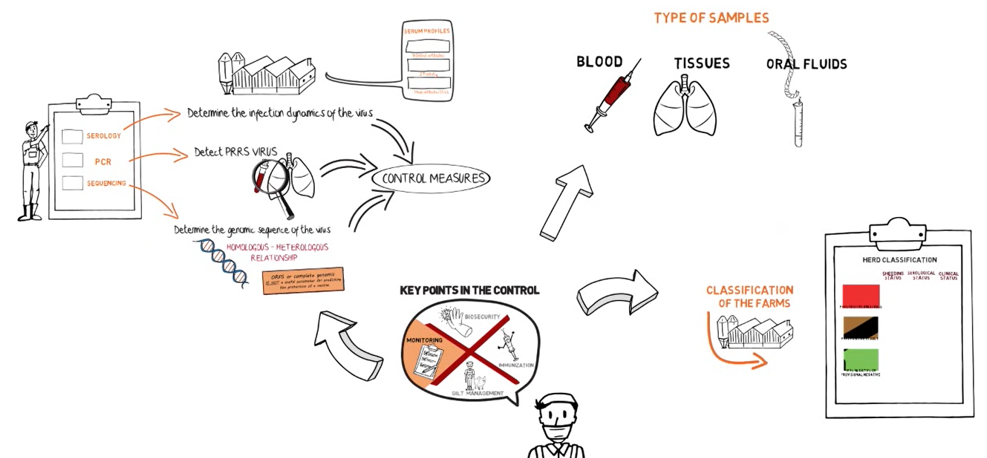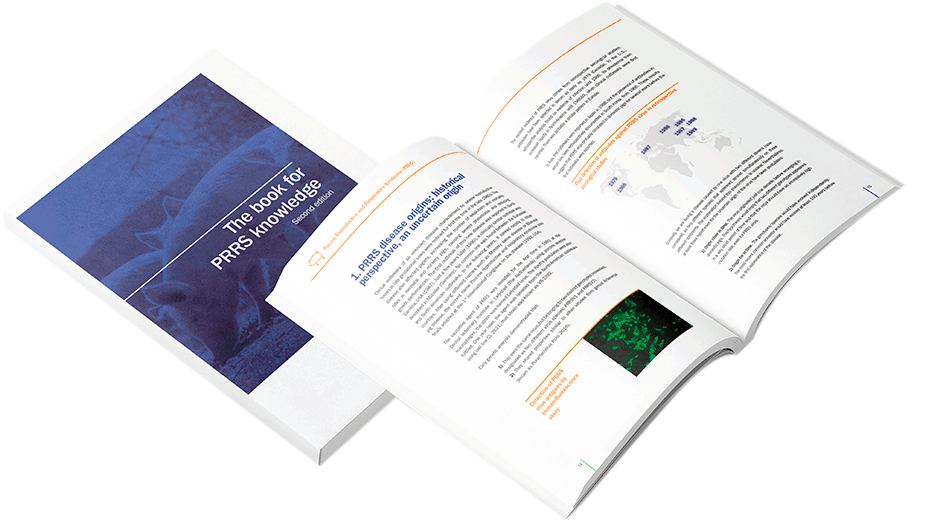When we have an early vaccination of piglets in the herd (about 10 days of age) for PRRS and we want to check the piglets at weaning, after about 10 days, how can we assess the risk of management errors or infections during the farrowing period, starting with the negativity of the piglets through blood samples at 3 days of age? If I take blood samples, I may find the vaccine virus, or even the two viruses, how do we interpret this and above all how do we understand if they enter the weaning room viremic (non-vaccine…)?
Great questions. When vaccinating suckling piglets with modified-live virus (MLV) vaccine, I like and support your plan on doing diagnostics immediately before vaccination. This ensures understanding the wild-type virus activity and pressure of infection in that age group right before vaccination.
To monitor piglets in the first week of age, consider the following monitoring strategies for herds vaccinating suckling pigs:
- Tongue tip fluids (TTF) from stillborn pigs – negative results support lack of evidence of vertical transmission in the breeding herd. At this stage, biomanagement practices to prevent horizontal transmission between piglets, crates, and rooms is needed to break the cycle of PRRSv infection. If TTF are PCR-positive, this means the virus is still active in the breeding herd. Consider a combination of immunologic solutions in the breeding herd. If that was done recently, give some time for the herd immunity to establish.
- Processing fluids (if the herd castrates pigs) or tongue tip from dead pigs – great way to screen for general transmission of PRRSv in the farrowing room.
- Blood samples from suckling pigs: start with a low sample size (n= 10-15) until negative. Then increase the sample size to 30. Once negative, increase to 60. To keep the budget under control, it is fine to pool 1:10 to 1:20 without significant loss in sensitivity. It better to use more pigs with pooling than less pigs without pooling.

Regarding the second portion of your question, two ways to deal with vaccine versus wild-type virus are 1) to sample pigs before the vaccination age and use the sampling protocols described above, or 2) use molecular diagnostics to differentiate MLV-like from wild-type virus. Such molecular tools include vaccine-specific PCRs and ORF-2 or ORF-5 sequencing.
For cases where the sequencing results don’t match the clinical picture (e.g., sequencing suggesting MLV virus when there are PRRSV-associated clinical problems), consider requesting a whole-PRRSV genome sequence to rule-out recombination events between MLV virus and wild-type virus.
If you want to know more about PRRS diagnostic and monitoring read out chapter: “Monitoring”
You can ask your own question! Visit Pig333.com and submit your question to the experts.




